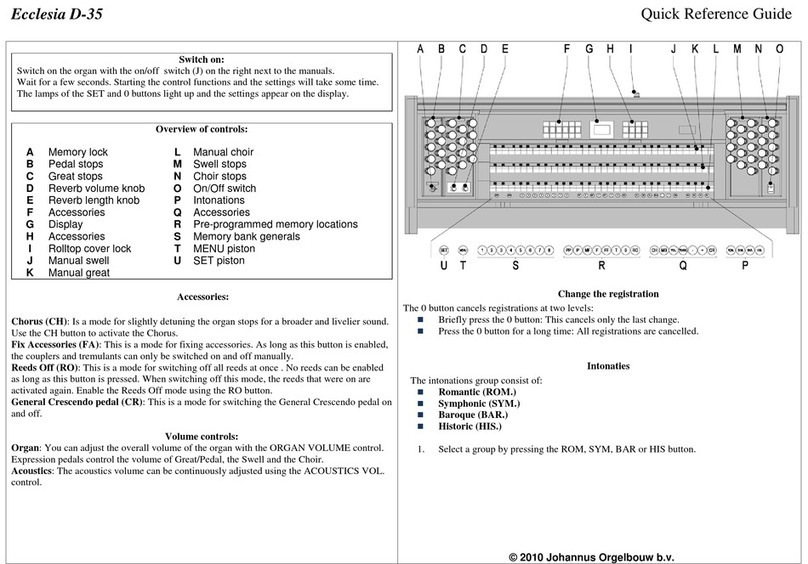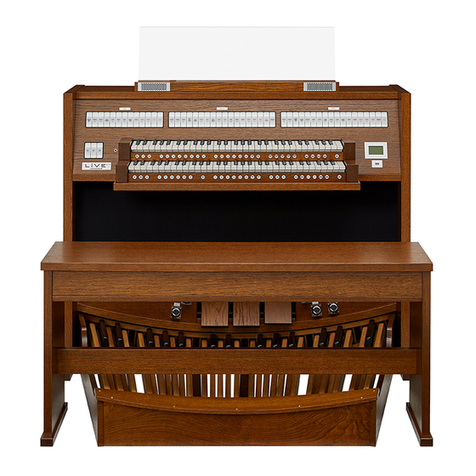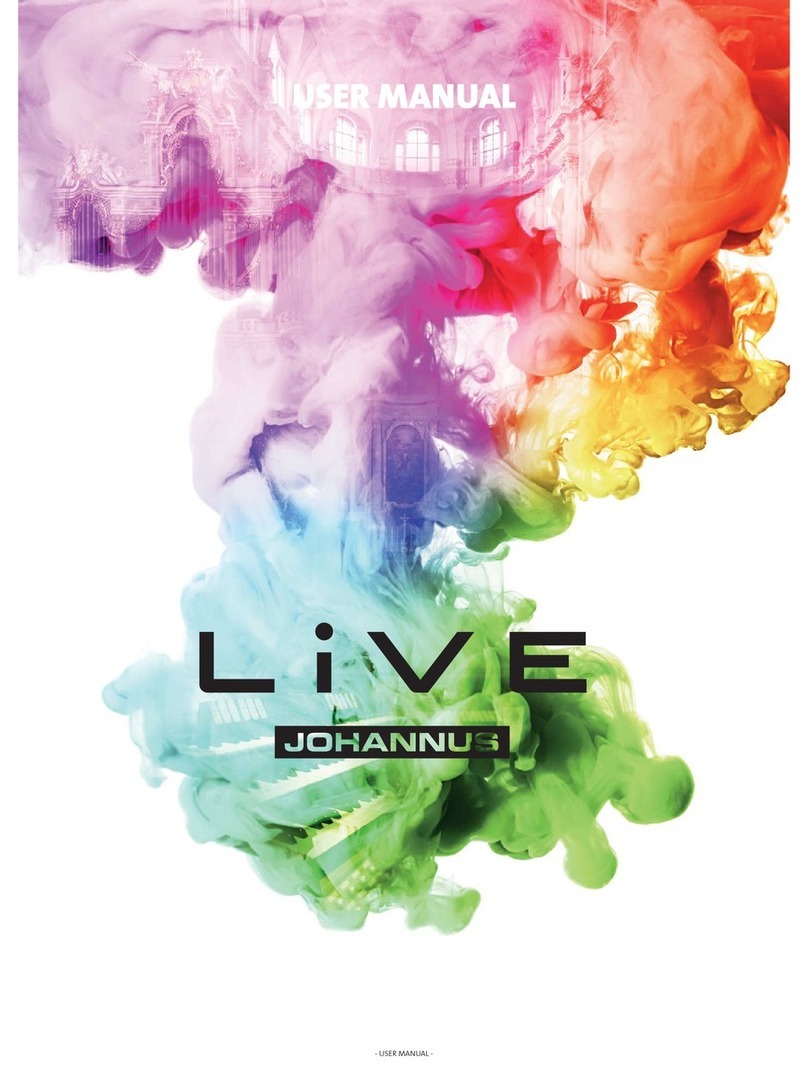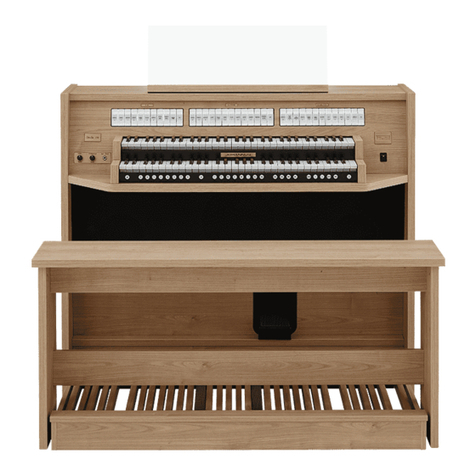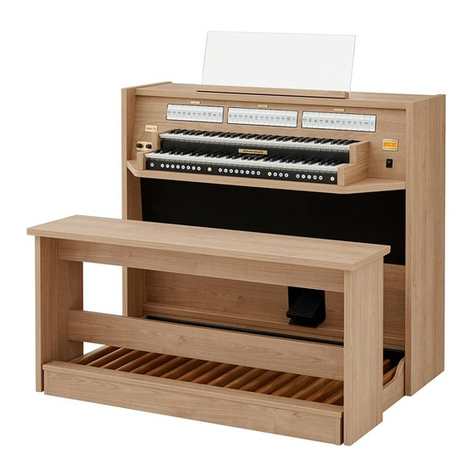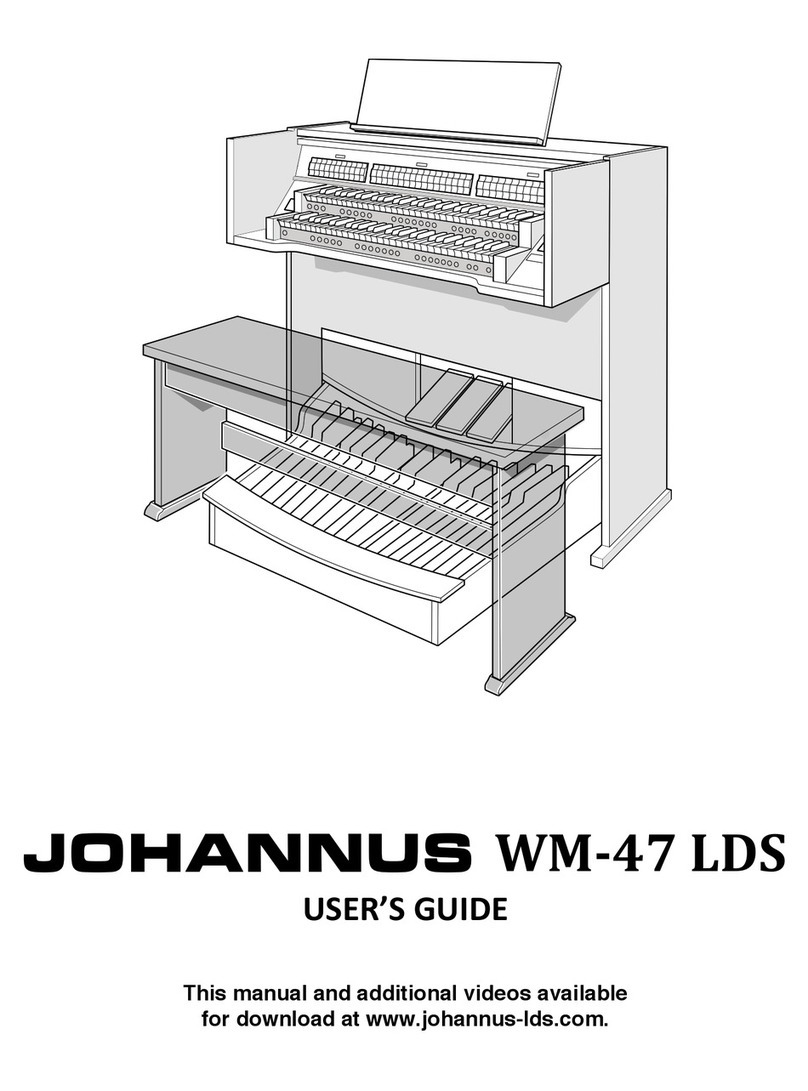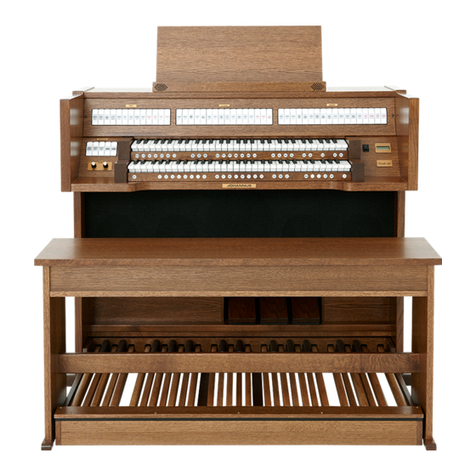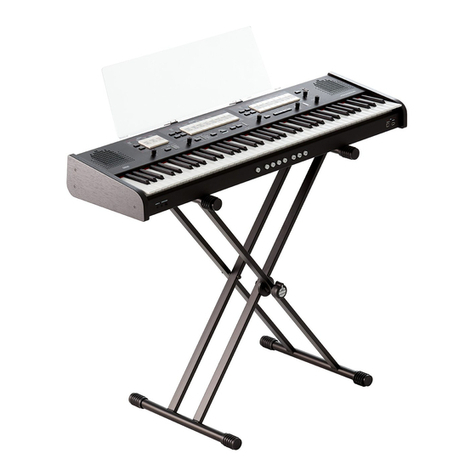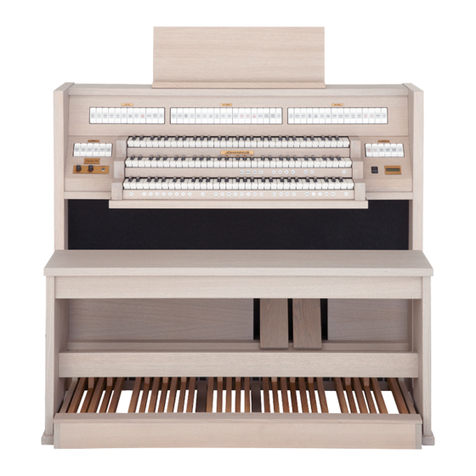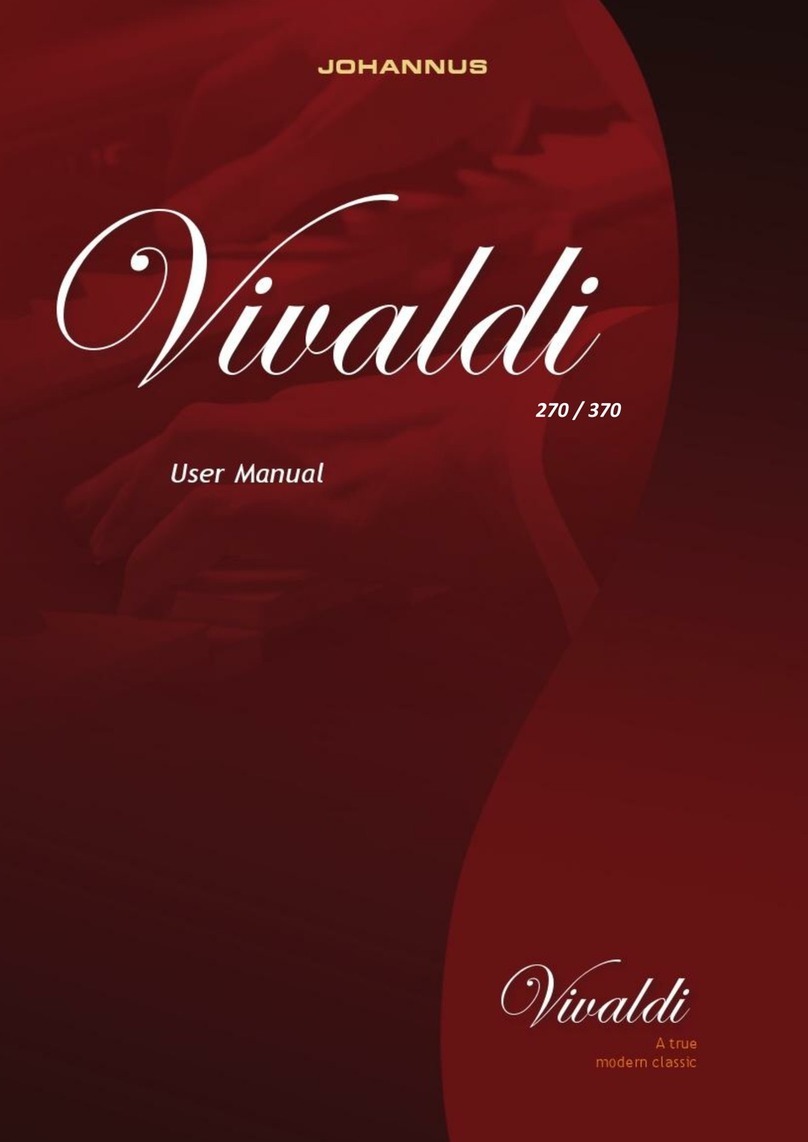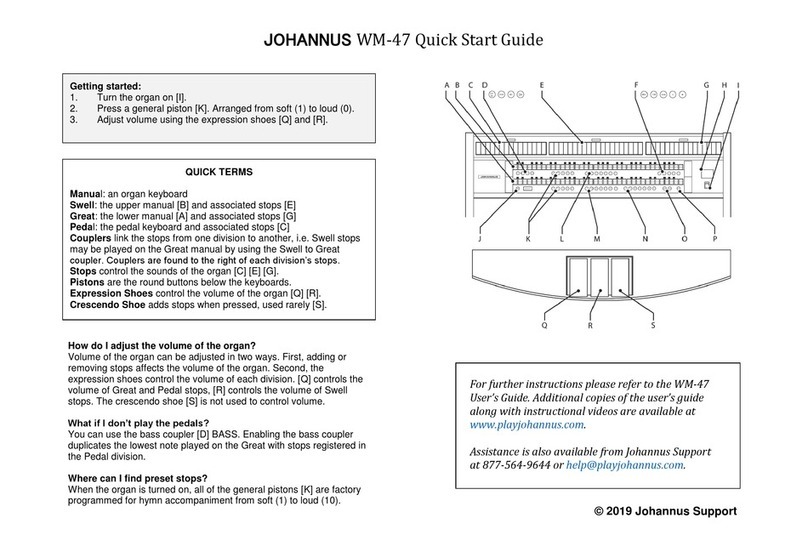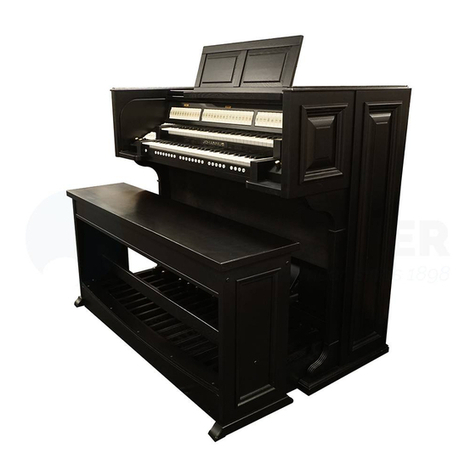
Pre-programmed memory locations:
Pre-programmed memory locations are available by operating pistons PP to T.
These six memory locations have factory settings (presets) appropriate for the quiet pianissimo
to the loud tutti.
Calling up a pre-programmed memory location:
Press a pre-programmed memory location (PP-T). The active stops light up.
Capture memory:
Through use of the capture memory, a registration can be made active with just one piston.
The capture memory consists of eight levels. Each level has eight memory locations.
These levels can be seen on the display (Mem:..).
The 128 capture memory locations are not pre-programmed and can be programmed by the
musician. Programming a capture memory location:
The current setting of the capture memory location will be lost.
Select the desired stops.
Use the - and + pistons to select a level (1-16) on the display.
Press the SET piston. Hold in the piston.
Press the desired memory location (1-8).
Release the SET piston.
Calling up a capture memory location:
Use the - and + pistons to select the desired level (1-16) on the display.
Press the desired memory location (1-8). The active stops light up.
The pistons SEQ- and SEQ+ allow you to select a lower or higher (respectively) memory
location in steps of one. The lit-up capture piston and the display indicate which memory
location has been selected. Reverb:
Use the ROM, SYM, BAR, HIS (styles), SOLO and TRIO (intonation) pistons to activate the
style and intonation the reverberation of which must be changed.
Press the MENU piston.
Use the - and + pistons to select the Reverb function on the display.
Press the SET piston.
The activated style and intonation appear on the line at the top of the display.
The line at the bottom indicates the selected reverberation.
Use the - and + pistons to select the desired reverberation.
Press the SET piston.
The selected reverb is now stored in memory.
The option Length appears on the display.
Use the - and + pistons to select the desired length.
Press the SET piston.
The option 3D Surround On/Off appears on the display.
Use the - and + pistons to switch the 3D Surround On or Off.
Press the SET piston.
The selected 3D Surround setting is stored in the memory and you return to the
main menu automatically.
Press the MENU piston to exit the Easy Menu.
External connections:
The external connections are on the left under the console
MIDI IN: This is an input for receiving MIDI codes from other devices.
MIDI MOD.: This is a programmable MIDI output for connecting a module or expander, for
example.
MIDI SEQ.: This is a non-programmable MIDI output for connecting a sequencer or PC
(with the optional Johannus Intonat program), for example.
AUX IN: This is a (stereo) input for playing the sound of an external device through the
amplifiers of the organ. For example, an expander connected to the organ through the MIDI
MOD. can be played through the instrument's loudspeakers.
AUX OUT: This is an output for connecting an external (stereo) amplifier.
EXT. REV.: This is an output for connecting Johannus external acoustics. This is a system
that imitates the spatial effect of a concert hall or cathedral.
PHONES: This connection for a (stereo) headphone is suited for a headphone with an
impedance of 30 Ω or more (see headphone specifications).
Volume controls:
Organ: You can adjust the volume of the organ with the ORGAN volume control.
Expression pedals adjust the volume of the Great/Pedal, the Swell and the Choir.
Acoustics: The acoustics volume can be adjusted smoothly with the ACOUSTICS volume
control. For further information see CD user manual.
© 2009 Johannus Orgelbouw b.v.
